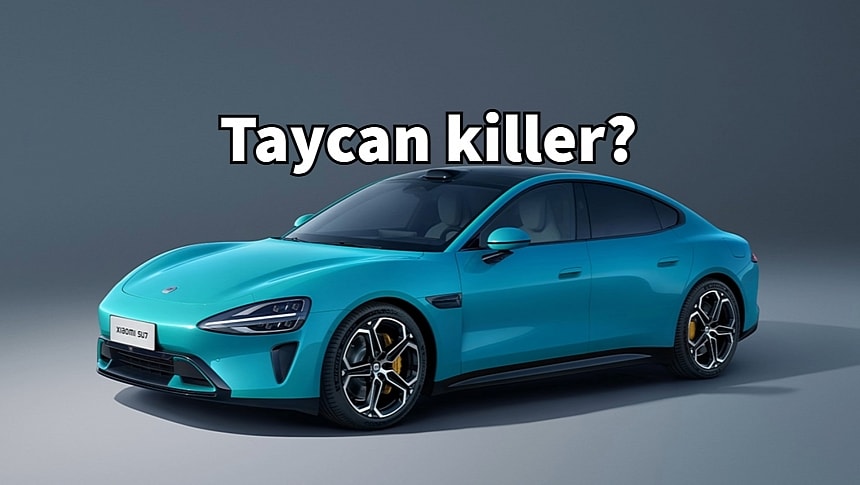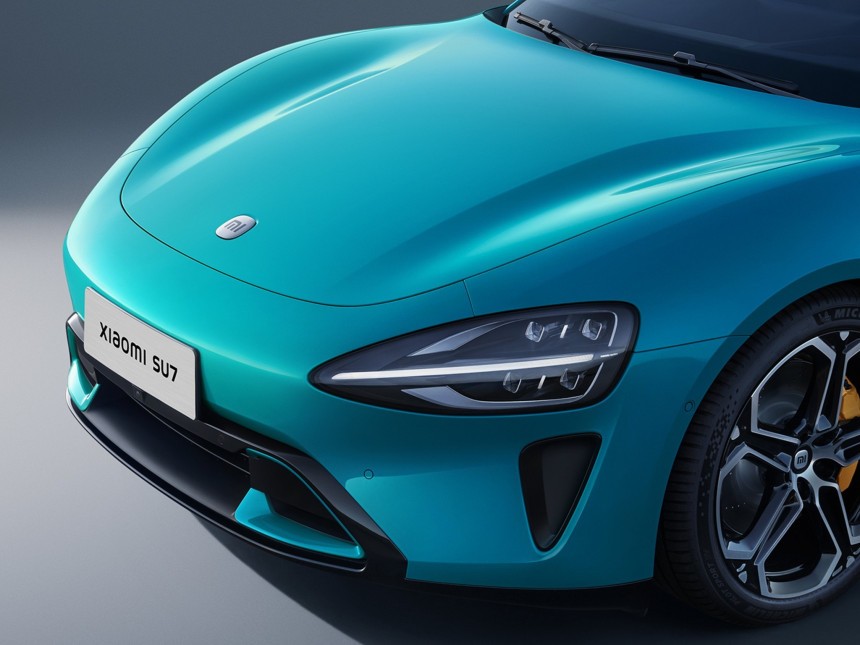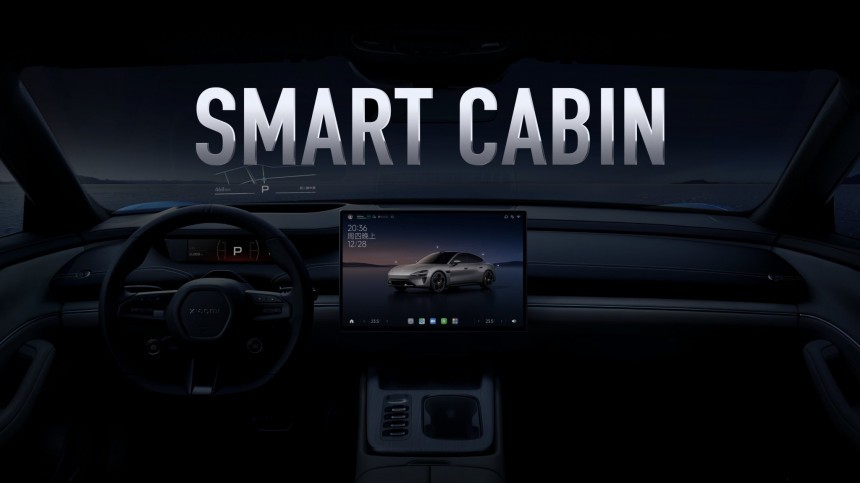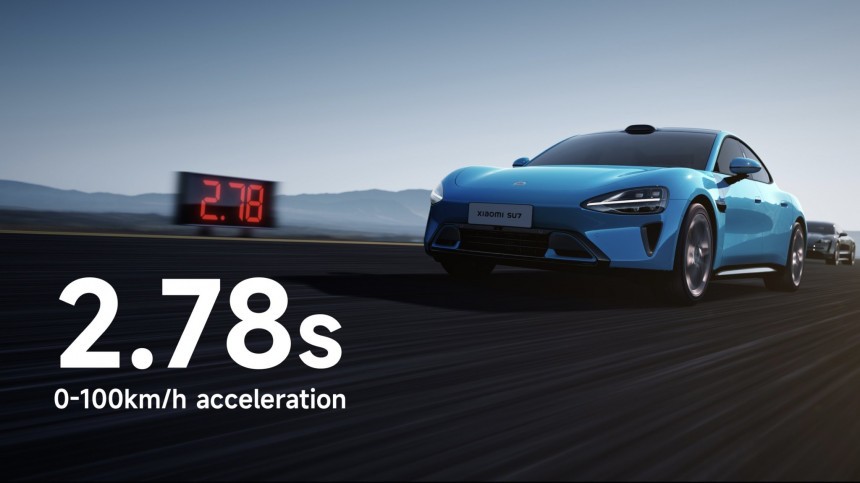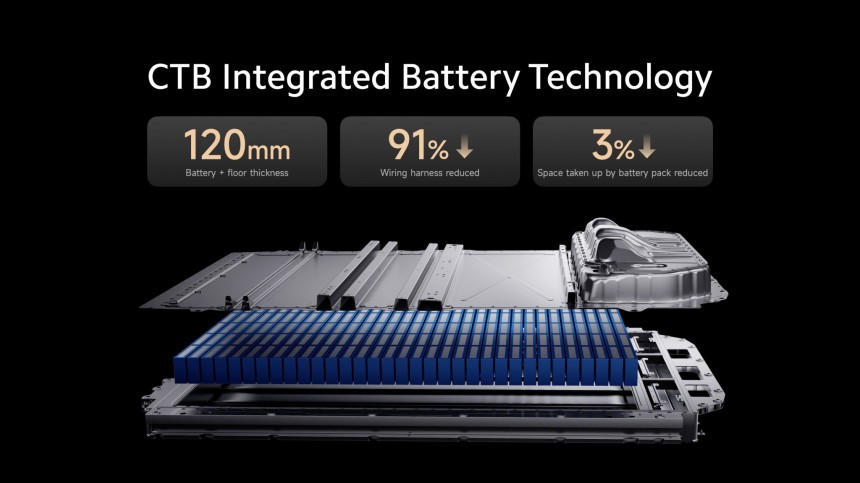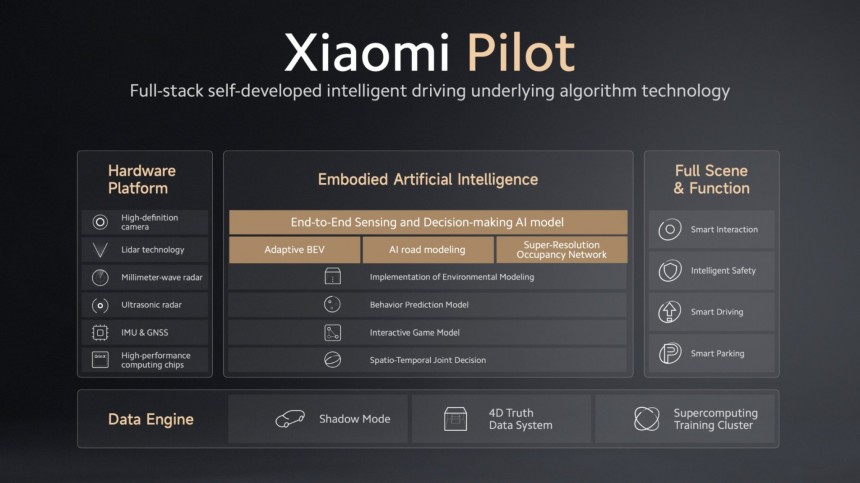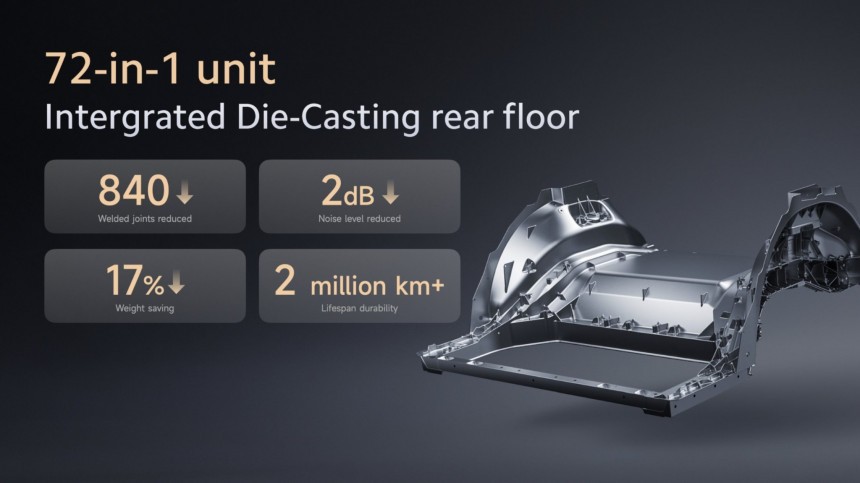It's easy to dismiss Xiaomi as just another copycat Chinese carmaker trying to build its first electric vehicles, but that couldn't be further from the truth. Although the name is mostly unknown in the US, it's a powerhouse pretty much everywhere else in the world. Its first electric vehicle, the SU7, is the company's "Model S moment," with the major difference that, unlike Tesla, Xiaomi has some great models to look up to.
Since Xiaomi is virtually nobody in North America, I think it's worth discussing the company's roots, mission, and accomplishments. Xiaomi was founded in 2010 by entrepreneur and angel investor Lei Jun, and one year later, it launched its first smartphone. It took Xiaomi only three years to conquer the largest smartphone market share in China. The asset-light company did not manufacture its own smartphones, following Apple in this regard and using contract manufacturers like Foxconn. It also started with no stores, selling its smartphones exclusively online.
Xiaomi has been dubbed the Apple of China for its high-quality products, which later evolved into an entire ecosystem mimicking the Cupertino company. However, it also attracted criticism because the software, dubbed MIUI, resembled a little too much Apple iOS. But that didn't stop Xiaomi, which overcame these embarrassing moments and started innovating. I have been using their top-of-the-line smartphones for the past seven years, and they are really good. I have no reason to believe their vehicles will be otherwise.
In 2021, the company ranked second in the world in the World Intellectual Property Indicators, thanks to its 216 industrial design patents filed in 2020. The same year, it became the third smartphone maker in the world, behind Apple and Samsung, a position it still holds. If you're wondering what we owe Xiaomi, think of edge-to-edge displays and ultra-fast charging technology with up to 300-watt wired and 80-watt wireless charging. Ultra-high resolution cameras (108 megapixels) and displays with high refresh rates are also in Xiaomi's portfolio.
Xiaomi launched its first electric vehicle earlier this week, with deliveries planned to start in April. Although many consider it another Chinese model without much value, the SU7 sedan could be the Tesla killer people have kept announcing for the past decade. However, unlike Tesla, which has a history of delays and missed deadlines, Xiaomi will start deliveries of the SU7 in the coming weeks, barely three years after the car project has been officially confirmed.
It's unclear at this stage whether Xiaomi's EV ambitions have emerged because it knew Apple was working on electric vehicles. We know that Apple burned the same amount of money Xiaomi invested in phone R&D without being able to produce even a prototype or a design sketch. On the other hand, Xiaomi is already pitting the SU7 against Tesla's Model S in China despite pledging only $10 billion to this project. However, the first impressions from the SU7 official launch show that Xiaomi has a winner in its portfolio. Here is why you shouldn't dismiss the Xiaomi SU7 as just another car project doomed to fail.
However, this doesn't mean other carmakers will not try to match or even surpass Tesla in the car market. Many will probably fail, but some will emerge stronger from this battle. Competition is welcome, leading to better products and more innovation. EV startups like Rivian and Lucid are putting up a decent fight, but their financial resources are limited. Legacy carmakers, on the other hand, lack the boldness to innovate after 100 years of doing things the same but different, but still the same for the most part.
This is where technology companies have an opportunity, with aggressive strategies, huge piles of money, and the willingness to fight. Yes, car manufacturing is new to them, but Tesla proved it can be done since modern cars are nothing but computers on wheels. Believe it or not, computers are these companies' bread and butter. We've already seen Sony, Apple, and Huawei trying to build a car, although it proved more difficult than they imagined.
Dyson was the first to throw in the towel, and earlier this year, Apple gave up too. Sony is still pretending to be interested in building a car. However, it admitted that it would be expensive as hell just to sell it at cost. On the other hand, somehow surprisingly, Xiaomi launched its first electric vehicle within three years of announcing the project. Of course, this doesn't mean it's impossible to fail, but it's highly unlikely considering Xiaomi's underdog culture and immense resources.
It's safe to assume that Xiaomi has watched the industry leaders closely before committing to the car project. This is why many must have been surprised that it chose a sedan as its first model. Although SUVs are the public favorites, Xiaomi thinks the sedan still has its fans, at least in China, and its sales strategy is based on this. Xiaomi believes that a cheaper Model S could convince Model 3 customers to "upgrade." The viability of this strategy remains to be proved. Still, Xiaomi is already working on its next models, with an SUV arriving shortly.
The electric sedan is built on Xiaomi's Modena architecture, suggesting a connection with the Italian city that hosts iconic brands like Lamborghini, Maserati, Ferrari, and Pagani. There is no official word on that, but it's clear that Xiaomi aims for a performance EV. In fact, almost everything about the SU7, starting with the design and ending with the fast-charging technology and features, reminds me a little too much of the Porsche Taycan.
Criticize all you want, but Chris Bangle (ex-BMW) has supervised the Xiaomi SU7's design. Bangle worked with Tianyuan Li, formerly involved with BMW's iX series and iVision concepts, and James Qiu, who had previously worked on Mercedes-Benz's Vision EQXX design. This explains the SU7's claimed drag coefficient of 0.195. The SU7 thus beats the Lucid Air, which has a 0.197 drag coefficient, to become the most aerodynamic production car in the world.
Predictably, the electric drive units are called "HyperEngines," and they seem to be more advanced than what many legacy carmakers produce. Next year, Xiaomi will be ready with the second generation of these motors, which could reach 27,200 rpm, up from the current 21,000 rpm. A carbon-sleeved rotor is also in development, with rotation speeds reaching 35,000 rpm.
Depending on the variant, one or two HyperEngines are needed, with the SU7 Standard and SU7 Pro developing 220 kW (295 horsepower) from an RWD configuration. Both variants feature a 400-volt architecture and an LFP battery produced by either BYD or CATL. The SU7 Max is a different beast altogether, thanks to its dual-motor configuration. The maximum power reaches 495 kW (664 horsepower), allowing the SU7 to reach 100 kph (62 mph) in under 2.8 seconds. Not as fast as the Tesla Model S Plaid, but pretty close.
Unlike its lesser brothers, the Xiaomi SU7 Max uses an 800-volt architecture, allowing it to achieve extreme fast-charging levels. Of course, Xiaomi calls this HyperCharge, thanks to being able to add 220 km (137 miles) of range in just five minutes of charging. After 15 minutes, the Xiaomi SU7 has already enough charge to go 510 km (317 miles). These are all measured according to the optimistic Chinese standard CLTC, but they are impressive nevertheless.
Xiaomi should not have problems getting car software up to speed, considering it's a software-first company. Even its smartphones are sold at a cost because Xiaomi knows it will make more money from software. This will not change with its electric vehicles. Tesla is about to face a formidable software competitor for the first time, which will sting. This battle is for the Chinese market now, but Xiaomi will move fast to every corner of the Earth, the same as it did with its smartphone business.
The SU7 already has great hardware, with the infotainment system powered by Qualcomm's Snapdragon Automotive platform and the autonomous driving functions taken care of by Nvidia's Drive Orin chips. Obviously, Xiaomi eyes autonomous driving with two tiers offered to customers. The Xiaomi Pilot Pro is a Vision-only ADAS powered by one Nvidia Drive Orin chip with 254 Tera Operations per Second (TOPS).
The Pilot Max adds another Orin chip (for a total of 508 TOPS) and a lidar sensor. This has a visual range of up to 200 meters (656 feet) and pixel accuracy of down to 0.1 meters. The system is backed by a millimeter-wave radar, ultrasonic sensors, and cameras to accurately record the car's surroundings and traffic. The autonomous driving system will begin testing next month and will be available in 10 Chinese cities by May and across China by August
Although Xiaomi is building its own factories and aims for vertical integration like Tesla, the SU7 is currently being produced by BAIC. This might put off some potential buyers, as BAIC has not impressed with the build quality of its vehicles. However, it should be noted that Xiaomi has extensive experience with contract manufacturing and will keep an eye on the quality of its EVs. The SU7 might not be perfect from the get-go, but then again, Tesla EVs weren't either.
The same stands for profitability. Xiaomi knows very well that it would not make money selling the SU7. This made some Tesla fans smirk and cite Musk's famous words: prototype is hard, volume production is hell. Yes, it is, but if anyone can match Tesla's resilience in manufacturing, it's Xiaomi.
Make no mistake, this is not a startup like Fisker, which ran out of cash because its vehicles were too bad to sell. If Xiaomi said it will be in the top 5 carmakers worldwide over the next 5-10 years, you better believe it will be. It has not only the resources but also the retail network footprint and a vibrant community to help it grow. I'm sure you'll hear a lot more often about Xiaomi EVs in the coming years.
Xiaomi has been dubbed the Apple of China for its high-quality products, which later evolved into an entire ecosystem mimicking the Cupertino company. However, it also attracted criticism because the software, dubbed MIUI, resembled a little too much Apple iOS. But that didn't stop Xiaomi, which overcame these embarrassing moments and started innovating. I have been using their top-of-the-line smartphones for the past seven years, and they are really good. I have no reason to believe their vehicles will be otherwise.
In 2021, the company ranked second in the world in the World Intellectual Property Indicators, thanks to its 216 industrial design patents filed in 2020. The same year, it became the third smartphone maker in the world, behind Apple and Samsung, a position it still holds. If you're wondering what we owe Xiaomi, think of edge-to-edge displays and ultra-fast charging technology with up to 300-watt wired and 80-watt wireless charging. Ultra-high resolution cameras (108 megapixels) and displays with high refresh rates are also in Xiaomi's portfolio.
Xiaomi: from Apple's enemy to Tesla's rival
To cut it short, Xiaomi copied Apple and is now in the process of surpassing it. In 2022, it pledged $16 billion in R&D over the next five years to achieve this goal. However, now the company has a new one: to copy Tesla and become one of the top car manufacturers in the world in the next 5-10 years. Looking at how it did in the smartphone market, I do not doubt this new goal is within reach. Xiaomi has eyed not only Tesla's car business but also artificial intelligence and robotics. Unlike other Tesla competitors, Xiaomi is not short of money or talent, which is why I believe you should keep an eye on this Chinese company.It's unclear at this stage whether Xiaomi's EV ambitions have emerged because it knew Apple was working on electric vehicles. We know that Apple burned the same amount of money Xiaomi invested in phone R&D without being able to produce even a prototype or a design sketch. On the other hand, Xiaomi is already pitting the SU7 against Tesla's Model S in China despite pledging only $10 billion to this project. However, the first impressions from the SU7 official launch show that Xiaomi has a winner in its portfolio. Here is why you shouldn't dismiss the Xiaomi SU7 as just another car project doomed to fail.
What's with this ridiculous "Tesla killer" thing?
The term "Tesla killer" is overused, sometimes making people laugh. The media has used it for almost all new car models launched after the Model S. Obviously, it's virtually impossible for a car model to kill Tesla. First, because the American carmaker is not standing still. Second, because it operates a solid multi-pronged business and is the industry leader in more ways than I can count.However, this doesn't mean other carmakers will not try to match or even surpass Tesla in the car market. Many will probably fail, but some will emerge stronger from this battle. Competition is welcome, leading to better products and more innovation. EV startups like Rivian and Lucid are putting up a decent fight, but their financial resources are limited. Legacy carmakers, on the other hand, lack the boldness to innovate after 100 years of doing things the same but different, but still the same for the most part.
This is where technology companies have an opportunity, with aggressive strategies, huge piles of money, and the willingness to fight. Yes, car manufacturing is new to them, but Tesla proved it can be done since modern cars are nothing but computers on wheels. Believe it or not, computers are these companies' bread and butter. We've already seen Sony, Apple, and Huawei trying to build a car, although it proved more difficult than they imagined.
It's safe to assume that Xiaomi has watched the industry leaders closely before committing to the car project. This is why many must have been surprised that it chose a sedan as its first model. Although SUVs are the public favorites, Xiaomi thinks the sedan still has its fans, at least in China, and its sales strategy is based on this. Xiaomi believes that a cheaper Model S could convince Model 3 customers to "upgrade." The viability of this strategy remains to be proved. Still, Xiaomi is already working on its next models, with an SUV arriving shortly.
Xiaomi takes on Tesla with a Porsche Taycan killer
The Xiaomi SU7 is an electric vehicle roughly the size of the Tesla Model S. This is a recipe that other EV startups, including Lucid, have tried. The difference is that Lucid came up with a $100K model, whereas Xiaomi offers similar features at a price below the Model 3. This is not enough for success, but it depends mostly on how good the SU7 proves.The electric sedan is built on Xiaomi's Modena architecture, suggesting a connection with the Italian city that hosts iconic brands like Lamborghini, Maserati, Ferrari, and Pagani. There is no official word on that, but it's clear that Xiaomi aims for a performance EV. In fact, almost everything about the SU7, starting with the design and ending with the fast-charging technology and features, reminds me a little too much of the Porsche Taycan.
Hyper everything
The Modena architecture copies a lot of Tesla engineering, using megacastings front and rear and a structural battery pack. Of course, being Xiaomi, they are called hypercastings instead. You'll see that the Chinese company uses the word "Hyper" a lot, a nod to its custom HyperOS that powers the latest smartphone models. HyperOS will also be used for its software-defined vehicles.Predictably, the electric drive units are called "HyperEngines," and they seem to be more advanced than what many legacy carmakers produce. Next year, Xiaomi will be ready with the second generation of these motors, which could reach 27,200 rpm, up from the current 21,000 rpm. A carbon-sleeved rotor is also in development, with rotation speeds reaching 35,000 rpm.
Depending on the variant, one or two HyperEngines are needed, with the SU7 Standard and SU7 Pro developing 220 kW (295 horsepower) from an RWD configuration. Both variants feature a 400-volt architecture and an LFP battery produced by either BYD or CATL. The SU7 Max is a different beast altogether, thanks to its dual-motor configuration. The maximum power reaches 495 kW (664 horsepower), allowing the SU7 to reach 100 kph (62 mph) in under 2.8 seconds. Not as fast as the Tesla Model S Plaid, but pretty close.
But software...
Tesla fans would probably have pointed out that the Xiaomi SU7 is nowhere near Tesla regarding software, let alone autonomous driving capabilities. This is obviously true, but it doesn't have to stay that way. During the SU7 launch event, Xiaomi CEO Lei Jun admitted that Tesla FSD (now named Supervised FSD) was the benchmark in developing the SU7. Jun thinks it will take Xiaomi 3-5 years to catch up with Tesla in terms of driver assistance systems and powertrain efficiency. However, Xiaomi's CEO believes the SU7 is better than the Model 3 in every other category.Xiaomi should not have problems getting car software up to speed, considering it's a software-first company. Even its smartphones are sold at a cost because Xiaomi knows it will make more money from software. This will not change with its electric vehicles. Tesla is about to face a formidable software competitor for the first time, which will sting. This battle is for the Chinese market now, but Xiaomi will move fast to every corner of the Earth, the same as it did with its smartphone business.
The SU7 already has great hardware, with the infotainment system powered by Qualcomm's Snapdragon Automotive platform and the autonomous driving functions taken care of by Nvidia's Drive Orin chips. Obviously, Xiaomi eyes autonomous driving with two tiers offered to customers. The Xiaomi Pilot Pro is a Vision-only ADAS powered by one Nvidia Drive Orin chip with 254 Tera Operations per Second (TOPS).
What about manufacturing?
I don't know how advanced Xiaomi's manufacturing is, but the company said it would use 9,100-ton machines to cast its chassis parts. This suggests it still needs to catch up with Tesla regarding alloy composition and structural design. From this point of view, it's similar to other Chinese carmakers, which usually use bigger die-casting machines with a clamping force higher than Tesla (6,000 tons Giga Presses, except for the Cybertruck) to compensate.Although Xiaomi is building its own factories and aims for vertical integration like Tesla, the SU7 is currently being produced by BAIC. This might put off some potential buyers, as BAIC has not impressed with the build quality of its vehicles. However, it should be noted that Xiaomi has extensive experience with contract manufacturing and will keep an eye on the quality of its EVs. The SU7 might not be perfect from the get-go, but then again, Tesla EVs weren't either.
Make no mistake, this is not a startup like Fisker, which ran out of cash because its vehicles were too bad to sell. If Xiaomi said it will be in the top 5 carmakers worldwide over the next 5-10 years, you better believe it will be. It has not only the resources but also the retail network footprint and a vibrant community to help it grow. I'm sure you'll hear a lot more often about Xiaomi EVs in the coming years.
